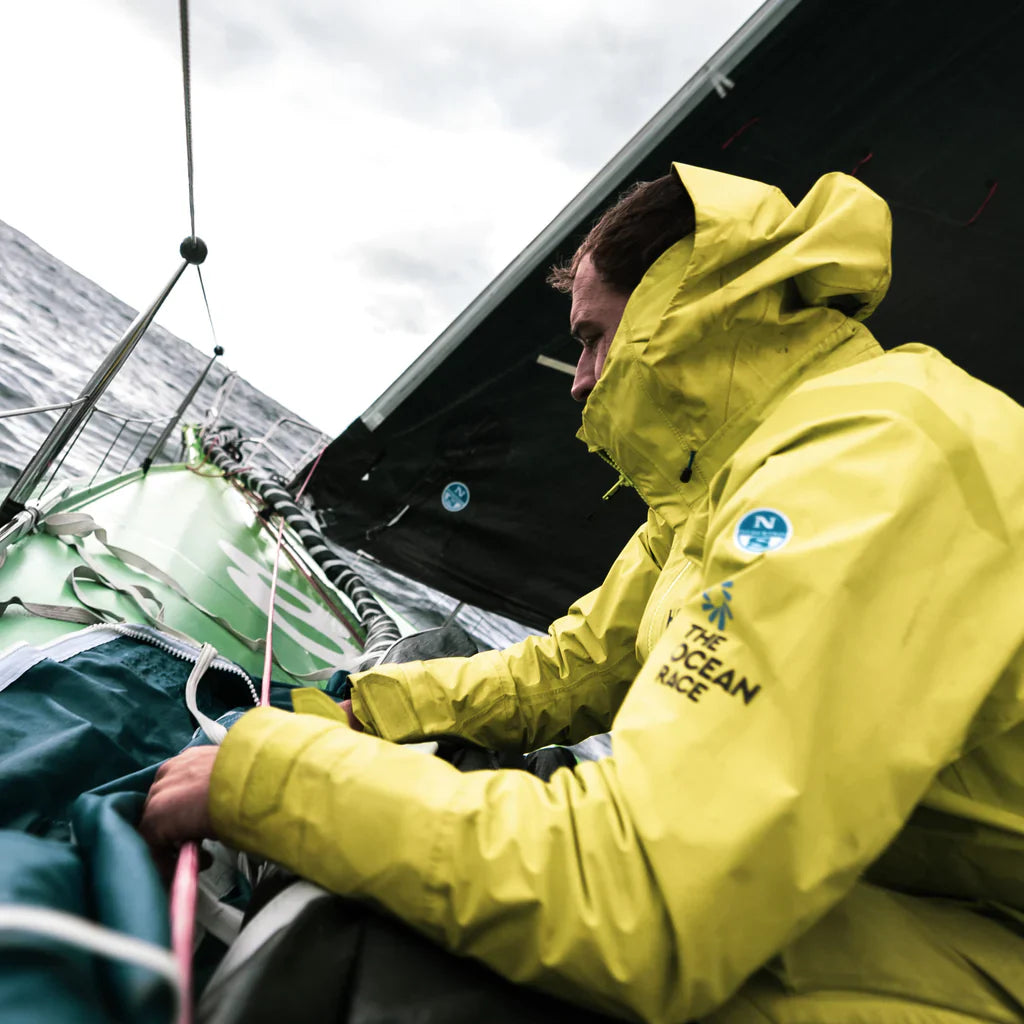THE OCEAN RACE 2022-23
SAILS THAT DELIVER SPEED, ENDURANCE AND PERFORMANCE
Global leader in sailmaking and performance clothing, North Sails, is proud to again be the Official Sail Supplier at the Ocean Race 2022-23. The Ocean Race is the ultimate test of sailing prowess, covering 32,000 nautical miles over six months and visiting nine ports around the world.
Fewer people have circumnavigated the earth by sail than have climbed to the summit of Mount Everest. Widely considered the most physically and mentally demanding competitive ocean-going event, The Ocean Race demands apparel and equipment that can withstand the most extreme conditions – upwards of 55,000 nautical miles and four equator crossings.

POWERING THE OCEAN RACE
DESIGNER FOR FAST. ENGINEERED TO LAST.
NORTH SAILS x THE OCEAN RACE
OFFICIAL SUPPLIER & SAILMAKER OF CHOICE
Official Sail Supplier to the VO65 fleet and the preferred sailmaker to the majority of the IMOCA programs participating,North Sails’ innovation in sailmakingelevates the race to unprecedented levels of excitement and competition.
North Sails’ expertise in sailmaking has allowed for an unmatched level of performance, reliability, and durability to help teams navigate the most challenging conditions.The relationship between this storied race and North Sails goes back decades. Many within North Sails have sailed onboard various teams and have won the race, while numerous designers and sailmakers have supported the technical side of programs in their quest to finish first around the world.
3Di TECHNOLOGY
SAILS THAT OUTLAST THE ADVENTURE
North 3Di sails not only lead the industry landscape in terms of high-performance, but also outstrip the competition in terms of reliability and longevity. The technology is ground-breaking because of three components; the use of spread-filament tapes; a sail shape set on a full size 3D mold, and, most significantly, the elimination of Mylar film.
North 3Di sails not only lead the industry landscape in terms of high-performance, but also outstrip the competition in terms of reliability and longevity. The technology is ground-breaking because of three components; the use of spread-filament tapes; a sail shape set on a full size 3D mold, and, most significantly, the elimination of Mylar film.

INNOVATION
POWER UP WITH HELIX SAILS
In the 2022-23 race, North Helix Structured Luff sails, the leading innovation in sailmaking, are changing the complexion of The Ocean Race, allowing teams to realise unprecedented speed and control, plus the strength and range needed for an exceptional race.
In the 2022-23 race, North Helix Structured Luff sails, the leading innovation in sailmaking, are changing the complexion of The Ocean Race, allowing teams to realise unprecedented speed and control, plus the strength and range needed for an exceptional race.

THE BEST FOUL WEATHER GEAR IN THE WORLD
NORTH PERFORMANCE CLOTHING
Nigel Musto, whose innovations have led the marine performance clothing industry for over 35 years and has developed the entire foul weather line for North Sails. Team Holcim-PRB is outfitted with North Sails’ technically-advanced foul weather gear range, designed, constructed and tested by industry experts using the best performing materials and highest quality components.
Nigel Musto, whose innovations have led the marine performance clothing industry for over 35 years and has developed the entire foul weather line for North Sails. Team Holcim-PRB is outfitted with North Sails’ technically-advanced foul weather gear range, designed, constructed and tested by industry experts using the best performing materials and highest quality components.

SUGGESTED READING

30 June






